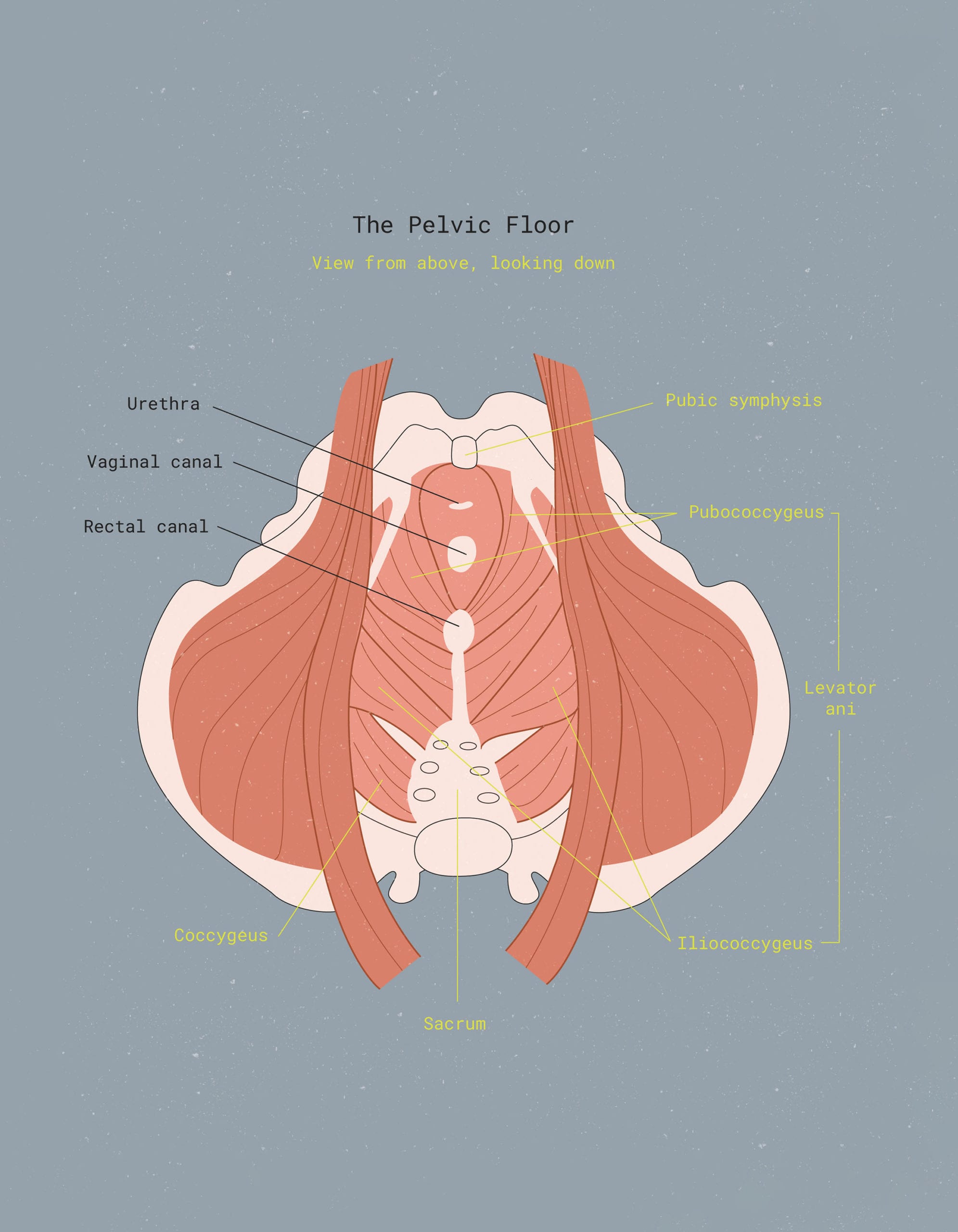Vagina facts: 5 things everyone should know
OB-GYN Dr. Jane van Dis drops the vagina facts we all need
I’ve been an OB-GYN for 13 years and love the quirky, funny, and sometimes head-tilting questions I get asked about the vulva and vagina. But sometimes, the questions people approach me with seem a bit juvenile – not because they lack education, but because our society is undereducated as a whole. Especially when it comes to the reproductive system and menstrual cycle.
Why is it that so many women have so little knowledge about their own anatomy? And why have so many basic vagina facts been kept in the dark?
Possibly because the vagina is a “potential space,” and it’s hidden. Yes, I can put an illuminated speculum up in there and shed some light on the matter but, generally, it’s an “idea of a space” – as opposed to one we actually see. And unless I videotape the speculum pelvic exam of you, it’s likely that, in your lifetime, you’ll never be able to see what the inside of your vagina looks like.
Compare this to the male sex genital organ, the penis, which is a flag that practically flies itself.
Being an Ob/Gyn means discussing everything (and I mean everything) that can possibly come up about vaginal anatomy. That said, the vast majority of menstruators approach me with the same five questions—it’s time to address them once and for all.
5 important vagina facts
1. Your vagina is not a black hole
Your vagina has a beginning (vulva), middle (vaginal walls), and end (cervix and fornix), and while tampons, condoms, and menstrual cups can get forgotten in the vagina, nothing can truly get “lost.” So, no: Your vagina is not a black hole.
Contrary to popular belief, the vagina does not open up to one’s abdominal cavity. The cervix and uterus are at the top of the vagina, and only semen/sperm and bacteria can enter into the cervix and the uterus. Of course, during childbirth a baby can come out going the opposite direction! However, what you can experience is having stuck objects inside of the vagina, like a tampon, condom or a sex toy. It’s crucial to seek medical help if you can’t remove the foreign objects yourself.
However, if you left your tampon inside for longer than recommended and you are experiencing symptoms of an infection or a sudden high fever, low blood pressure, vomiting or diarrhea, a rash resembling a sunburn – these could be symptoms of Toxic Shock Syndrome, a rare and life-threatening complication of certain types of harmful bacteria. Get thyself to the emergency room – STAT!

2. Your vagina shares a few similarities with your morning coffee
Here’s a vagina fact to share at your next group hang: Normal pH for the vagina is between 4.0 and 4.5, which just so happens to be about the same pH as a glass of wine or a cup of coffee. So, it’s basically the most civilized part of a woman’s body.
If you experience vaginal odor, it’s typically because the pH of the vagina has been altered. The most common occasion for this pH imbalance occurs when you have an overgrowth of a normal, healthy bacteria, called Gardnerella vaginalis. Your pH can be altered by various factors, such as hormonal changes, sexual activity, medications, or even dietary choices.
While Gardnerella vaginalis lives in your vagina all the time, it can occasionally grow out of control, which changes the vaginal pH balance and makes it more alkaline (so, less acidic).
Have you ever wondered, “Does my vagina smell fishy?” If it does, blame Gardnerella vaginalis (too much can cause Bacterial Vaginosis), because that fishy smell is (in most cases) solely an elevation or imbalance in the vaginal pH level. Sadly, our proverbial glass of wine vagina has now become an almond milk or apple juice vagina. Time to talk to your healthcare provider!
3. Keeping your vagina “dirty” is actually keeping it clean
The third on this list of vagina facts might be my favorite: The vagina is self-cleaning. So…
Stop douching, stop douching, stop douching! Because this topic is so important, I just wanted to say it again – stop douching! Your mouth is, in a manner of speaking, dirtier than your vagina. You don’t have to clean your vagina, just take simple steps: eat healthy, exercise, get plenty of rest.
Do you need to wash your hands before and after you touch yourself or put your fingers in your vagina? Yes. The same way you would wash your hands before eating. It’s time we destigmatize the idea that your vagina and cervix are “dirty.”
Sure, there is a LOT of cultural baggage and media that would tell us otherwise, a lot of “squeamishness” about the vagina and cervix. But your vagina is actually an amazing place…. Like a small cafe with cobblestones in Italy, in Spring, serving only the finest red wine and espresso (remember pH above?).
That said, you should always wash the things you put inside your vagina, including fingers, foreign bodies such as toys, menstrual discs and cups.
How does the vagina clean itself?
The vagina is self-cleaning and maintains a delicate balance of good bacteria. It naturally produces discharge that provides natural lubrication and flushes out dead cells and bacteria, keeping the area clean. Avoid douching or using scented products, as they can disrupt this natural process and lead to higher risk of infection.

4. For goodness sake, yes, vaginal discharge is normal!
Every woman makes different amounts of vaginal discharge, and it changes throughout the month, depending on where you’re at in your cycle. The greatest amount of discharge occurs during ovulation (days 11-14), but in a normal 24-hour timeframe a woman produces ¾ of a teaspoon of vaginal discharge.
I cannot emphasize this enough: It’s normal to have discharge EVERY DAY OF YOUR LIFE. In addition, the color of your vaginal fluid can vary. Sometimes clear, sometimes opaque, sometimes thick, sometimes thin, sometimes yellowish, whitish, even greenish. As long as it doesn’t smell fishy, or come along with things like pain, irritation, itchiness or a burning sensation, it’s likely 100% normal.
If you experience abnormal vaginal discharge with a fishy smell, discomfort in the vaginal canal, painful or a burning sensation, get in touch with your gynecologist to rule out possible infections such as bacterial infections or vaginal yeast infections, or STI’s such as trichomoniasis, vaginitis, bacterial vaginosis (BV), amongst others.
5. Let’s talk about sex, baby
Vagina fact number five: The average vaginal length is 9cm or 2.5-3.0 inches (the length of a woman’s index finger, approximately), but can expand up to 200% during arousal and intercourse.
And what about the G-spot? While its existence is highly controversial, the G-spot is actually the name given to the area of tissue right underneath the urethra, on the top (front) wall of the vagina.
My goal with my patients is to educate and destigmatize so we can talk about vaginal health, the vulva, vagina, and cervix using terminology we all understand and which removes pejoratives, shame, or guilt.
Women (and individuals assigned female at birth) are not an inside-out version of men. We have a palate and an anatomy that is unique to us. Vaginas are best when understood and treated with care.
How does the vagina change over time?
The vagina undergoes various changes throughout a person’s life due to hormonal fluctuations, pregnancy, and aging. These changes can affect elasticity, lubrication, and overall health. Understanding these vaginal facts helps in recognizing what is normal and when to seek medical advice for any concerns.
This article is informational only and is not offered as medical advice, nor does it substitute for a consultation with your physician. If you have any gynecological/medical concerns or conditions, please consult your physician.
© 2025 The Flex Company. All Rights Reserved.







